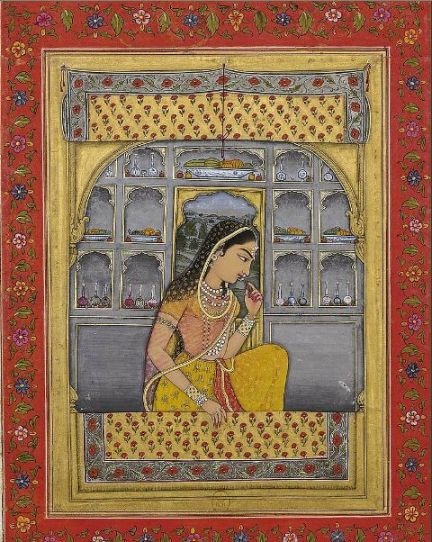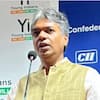Explorer
Advertisement

Padmavati: Understanding the medieval warfare

Rani Padmini/ Image courtesy: Wikipedia
Since the attack by Karni Sena on Sanjay Leela Bhansali over his alleged plans to depict a love relationship between Chittor Queen Padmini and Delhi Sultan Allauddin Khilji, the historical debate around this dark and painful episode of Indian history has regained life. Since then Bhansali has denied that his movie is going to depict Padmini in love relationship with Khilji.
That is quite reasonable as showing Padmini in any such relationship with Khilji would not only have involved violence with history but also with common sense. Existence of a love relationship between Queen of a Rajput Kingdom situated in topographical seclusion at the fag end of Rajasthan and Delhi's Sultan in an era when modern means of communication were inconceivable, was simply impossible.
Another issue which has cropped up concerns the historical authenticity of story told by Malik Mohammad Jayasi in his classic Padmavat centuries after Allauddin sacked Chittor. Most of the Marxist historians deny the very existence of Padmini and ascribe her only to the fantasy of Jayasi. Even the right leaning historians like Pandit Gauri Shankar Ojha and Kishori Sharan Lal have questioned the Jayasi's account as well as the tradition which is very much close to Jayasi's account.
However, another school of historians constituting eminent names like James Tod, Ishwari Prasad and RC Shrivastav point out that had Padmini only been a product of Jayasi's fantasy, unbroken tradition of Mewar would not and could not have borrowed the tale nor would have bards of Rajasthan sung her praises for centuries relying upon poem of a Muslim poet hailing from the countryside of central Uttar Pradesh. However the story is much bigger than the debate whether Padmini was a real historical figure or not.
All historians agree that thousands of women jumped into fire during Allauddin's attack on Chittor. Same had happeneed during the seige of Jaisalmer in 1295 AD. Jauhar continued to be performed by Rajput women till the times of Aurangzeb. Question that immediately strikes is what exhorted so many ladies to simultaneously take such an extreme step.
Was it just for saving their "honour" or there was something more to it? Women performing Jauhar during Chittor and Jaisalmer's seiges were very well aware of what had transpired after victory of Arab and Turk invaders during past three centuries that preceeded the reign of Allauddin. For instance Chachnama narrates how Muhammad bin Qasim captured 60,000 slaves including women and children from Rawaar in Sindh including women of royal birth and sent one-fifth them over to Caliph who "sold some of these and some he presented to others." Utbi narrates how the Mahmud of Ghazni sold the defeated King of Kabul, Jaipal who was paraded in slave market along with his relatives and sold away in slavery.
Mentally shattered Jaipal committed suicide. While Arabs were pushed back across Indus by a Rajput confedracy led by Chittor's ruler Bappa Rawal in what is known as the battle of Rajasthan, Turks were successful in permanently setting up their feet in India by the close of 12th century. They had committed acts of extreme savagery with Indian women as they swept through Afghanistan, Sindh and Punjab.
Stories of of rape and enslavement perpetrated by them had spread through Northern India and Indian Kings had in anticipation of further depredations by them had levelled a defense cess, known as "Turushka Dand", on their subjects. So savagery of these invaders was already well known in Indian palaces as well as ordinary households. So, when Chittor King Rana Samar Singh's wife heard at Delhi about Rajput defeat at the hands of Mohammad of Ghur in Battlefield of Tarain just few miles away from Delhi and her husband's demise in the battle, she immediately performed jauhar as victorious enemy was fast approaching towards Delhi.
But still many people may ask today was honor more important than human life? To get an answer to this we need to examine what was the social status to which Indian women, particularly the Rajput women were accustomed to before Muslim invasions started and how those who were captured were treated. Colonel Tod tells us that "he (a Rajput) consulted his wife in every transaction; from her ordinary actions he drew the omens of success, and he appended to her name the ephitet Devi or God like.
In spite of her incarceration, the influence of a Rajputni in public as well as domestic affairs was often far more powerful than that of her husband." Tod cites an incident which gives us an idea of how fiercely independent a Rajput women used to be. The King of Jaipur married a princess from a small principality and she used to dress and carry herself in a bit traditional rustic manner while his other wives had espoused dressing styles of aristocratic Mughal court. One day King chided her by taking out a pair of scissors saying he will cut short her clothes to bring those in line with latest fashion. She responded by taking out a sword threatening her husband to not to insult her traditional dresing sense else she will prove that "she can use the sword more effectively than the prince of Amber the scissors".
Now let's contrast this with what fell upon those who found themselves in the captivity of invading armies. A contemporary, Indian treatise Kanhade Prabandh describes the plight of prisoners including 20,000 women and children taken captive by Allauddin Khilji's army from Gujarat: they made people captive – priests and children, and women, in fact, people of all (description) huddled them and tied them by straps of raw hide.
The prisoners suffered greatly and wept aloud. During the day they bore the heat of the scorching sun, without shade or shelter as they were [in the sandy desert region of Rajasthan], and the shivering cold during the night under the open sky. Children, torn away from their mother’s breasts and homes, were crying. Each one of the captives seemed as miserable as the other. Already writhing in agony due to thirst, the pangs of hunger added to their distress. Some of the captives were sick, some unable to sit up.
Some had no shoes to put on and no clothes to wear. Some had iron shackles on their feet. Separated from each other, they were huddled together and tied with straps of hide. Children were separated from their parents, the wives from their husbands, thrown apart by this cruel raid. Young and old were seen writhing in agony, as loud wailings arose from that part of the camp where they were all huddled up. Weeping and wailing, they were hoping that some miracle might save them even now."
Clearly the Jauhar was ultimate expression of hatred by freedom loving Rajput women towards the invaders trying to enslave them and deal with them as chattels.
However, there was also a military viewpoint to Jauhar when viewed in this context. Mery Storm notes in her book "Head and Heart: Valour and Self-Sacrifice in the Art of India" that Jauhar, as opposed to Sattee, "was the ultimate embodiment of the military notion of a scorched earth policy: if the enemy prevailed, he would have no spoils of war; no plunder and no rape." She describes the scene of Jauhar at Jaisalmer in 1295 to show how destruction of property was a "crucial element" of Jauhar and how "every valuable was consumed with them (women), not the worth of a straw was preserved for the foe."
Disclaimer: The opinions, beliefs and views expressed by the various authors and forum participants on this website are personal and do not reflect the opinions, beliefs and views of ABP News Network Pvt Ltd.
Follow Blog News on abp LIVE for more latest stories and trending topics. Watch breaking news and top headlines online on abp News LIVE TV
View More
Blog
 “ Iran-Israel Tensions: Will Tehran’s Response Shape New Dynamics Of Power In Middle East?
“ Iran-Israel Tensions: Will Tehran’s Response Shape New Dynamics Of Power In Middle East?

Anant Mishra
Advertisement
Advertisement
Advertisement
Advertisement
Trending News

for smartphones
and tablets
and tablets

























